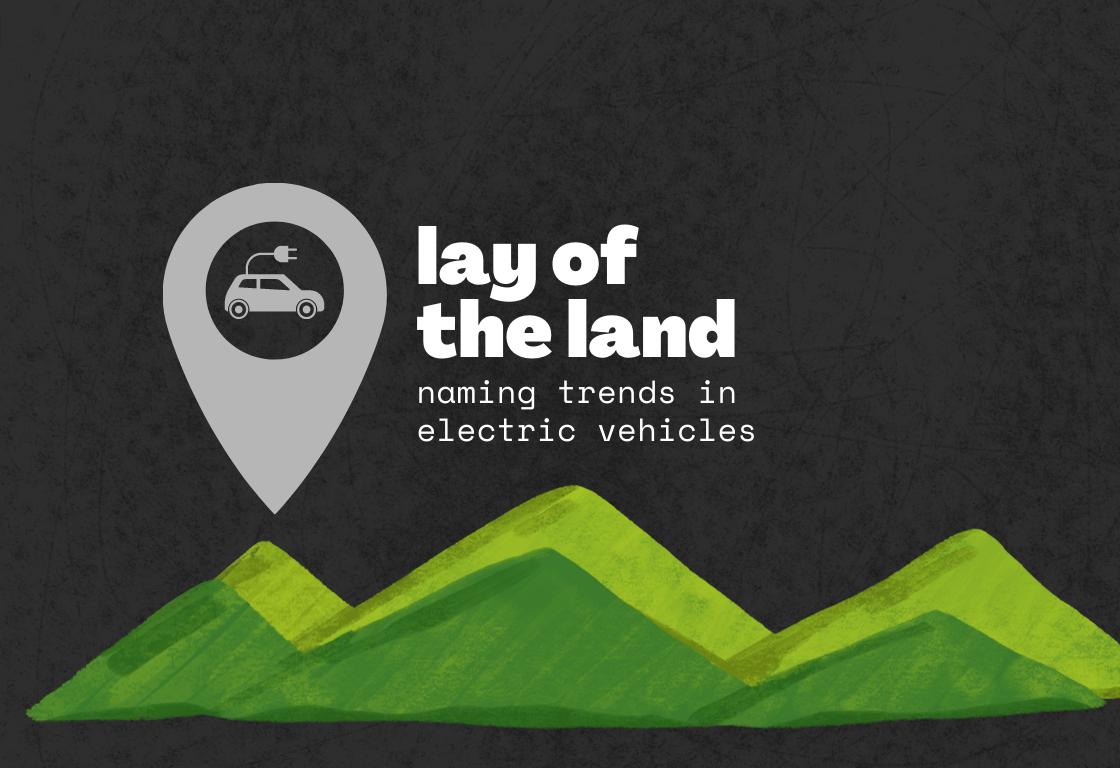I’ll admit it. I was a Tesla fanboy.
But after watching Elon Musk’s various exploits on (and involving) Twitter earlier this year, I fell off the Tesla bandwagon. Despite really wanting to own an all-electric car, I made a firm decision to never buy a Tesla.
Lucky for me, this change of heart coincided with the release of so many amazing electric vehicles, which clearly demonstrates that Tesla is no longer the only EV game in town.
So naturally I started to wonder, across an array of segments and price points, what is happening with brand naming in the EV market? Here are seven trends that give you a lay of the land.
Add “E” to everything
From the Mustang Mach-E to the Audi e-tron, to Chevrolet highlighting the “...EV…” in its brand name on electric vehicles, a lot of manufacturers are going all in on the “E.” This is an obvious tactic akin to the early days of “e-commerce” or “e-business.” As overdone as it has been, it does make sense as a way to simply highlight a vehicle’s placement in the manufacturer’s broader portfolio. Will it last? Probably not as electric cars become more popular, the EV aspect will likely be assumed.
Make it feel technical
Whether it’s a more direct EV reference like the upcoming Buick Electra or more mood-based names like the Volkswagen ID. Buzz, makers are choosing to intentionally create names that feel more technical and digital to speak to innovation.
Go au-natural
In contrast to the technical, we see a number of nature references, which create an entirely different vibe for these brands and tie to the more environmentally-friendly nature of the EV category altogether. Nissan LEAF was the first to lead with this tactic, but recent names like Lucid Air, Fisker Ocean and Polestar to some degree reinforce this trend.
Get funky
This is more of a sub-trend, often tied to the design of the vehicles itself, but there are a handful of funky, and fun, names out there. Perhaps the best example of this is Canoo — those boxy van-bus-truck type vehicles that aren’t quite yet out on roads. As the category grows and unique designs become more acceptable and sought after, we’ll likely see more playful names come to market.
Just add “EV” to a legacy brand
To preserve brand equity for legacy models, makers simply add “EV” to the naming string. While upcoming releases like the Ford Explorer EV and Porsche Macan EV may ultimately have different, more unique names, the tactic makes sense when offering an electric version of a long-standing powerful brand.
Sub-names that signal “electric”
While adding “EV” to an existing brand name is easy, some manufacturers create sub-names that have a little more juice. This route is smart because it still preserves the legacy brand name, but it creates a new, engaging image that clearly signals the electric category. Think Volvo C40 Recharge or the Genesis G80 Electrified.
Sidestep category references; create an entirely new image
Hyundai Ioniq 5, Honda Prologue, Nissan Ariya, Lotus Evija, and even Rivian. These are all examples of makers avoiding EV references entirely and creating new brands with interesting, and often exotic, names. This trend shows makers are envisioning a future where cars are assumed to be electric, and they’re laying the groundwork for entirely new and enduring product brands within their portfolios.
I would be remiss to not mention Tesla’s naming system — the simple “Model _” formula. While new additions to the portfolio may change the strategy, the current portfolio of Models S, 3, Y and X are designed to spell “S3XY.” Err, get it? Fanboys, rejoice.
Just another reason to keep an eye on this fascinating, quickly evolving sector and all the great new cars (and hopefully names) that we will see on the road.
Scott Milano is the founder & managing director at Tanj.
